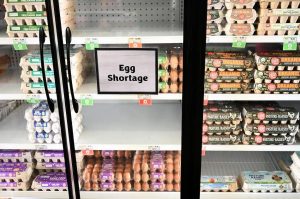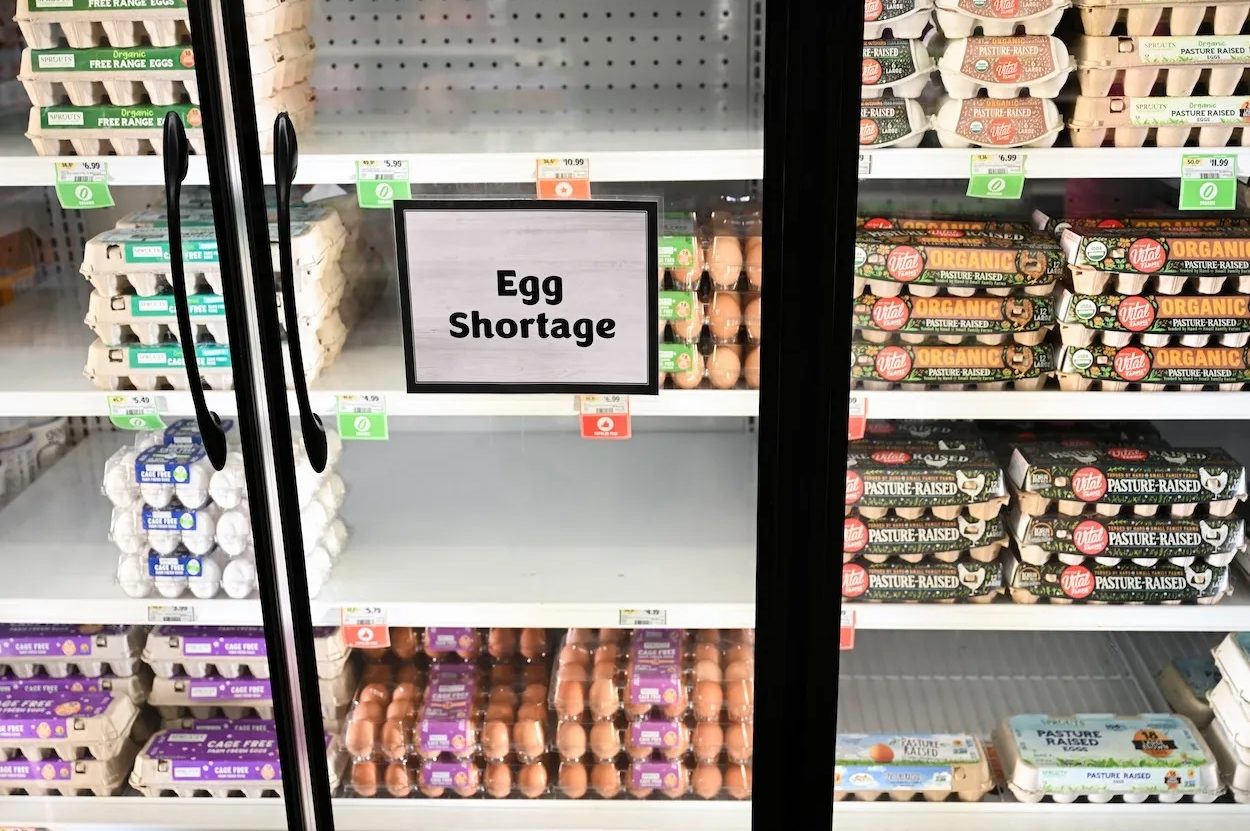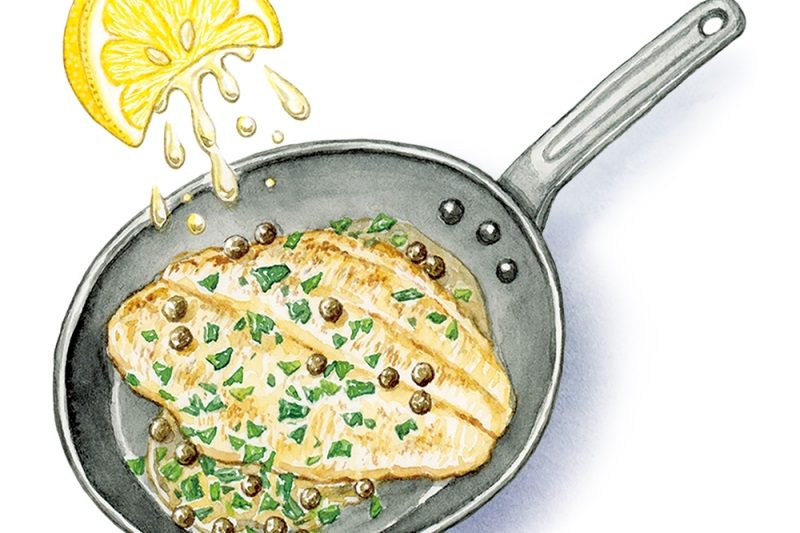This article is in
The Spectator’s December 2019 US edition. Subscribe here.
In Greenwich Village, one block south of Washington Square Park, stands the flagship store of DŌ, ‘New York City’s first ever cookie dough scoop shop’. Opened in 2017 by an American designer with fond childhood memories of baking with her mother, DŌ is now so popular that it requires a special line policy, as in: ‘SINGLE FILE so that pedestrians can still use the sidewalk.’ Often, a line of hundreds of customers can be seen snaking around the block, eagerly awaiting tubs and cones of its buttery, sugary (and uncooked) batter.
Two years ago, the New York Times noted that DŌ was one of the major players ‘in the emerging category of edible cookie dough’. DŌ now offers online deliveries in all 50 states and competitors report similar growth. It seems bizarre to me. But it does not seem that way to others, including my young friend Harriet, aged seven, a native New Yorker with English parents, whom I meet one fall afternoon at our old haunt just north of the park, Otto Enoteca Pizzeria.
‘It isn’t weird because it doesn’t have raw egg in it,’ Harriet says, sipping on her Shirley Temple, a lemon soda with a shot of grenadine. ‘But do you think Santa Claus would agree?’ I ask, sipping on what is called a ‘Dirty Shirley’ (the same drink but with a shot of vodka). ‘Yes!’ she says.
Today, as well as her Gryffindor headband, Harriet is wearing a colorful dress, decorated in magic spells: Petrificus Totalus! Lumos! Wingardium Leviosa! The Harry Potter phase is apparently my doing, though I honestly don’t recall how it came about. Harriet orders her Otto usual, spaghetti with butter and Parmigiana. Although the lasagna here is unsurpassable, I decide to go for eggplant Parmigiana, which arrives in perfect condition, accompanied by a classic tomato and basil sauce, at just the right temperature. ‘Did you know that where your parents and I come from, an eggplant is called an aubergine?’ I ask. Harriet did not know this but finds it hysterical.
I pull her belated birthday present out of my bag, a glossy edition of How the Grinch Stole Christmas by Dr Seuss. ‘Oh! I love this!’ she says, hugging it tightly. ‘Thank you so so much!’ Harriet’s regular manners exceed her table manners considerably, for, as she speaks, spaghetti dangles from her mouth and drops onto the floor. After a typically intense discussion, we both decide that The Grinch is a story about love and forgiveness, which makes it quite suitable for Christmas.
After lunch, we walk across the park, which is carpeted in a rich array of reds and browns, and where Harriet is beguiled by a corgi dressed in a magician’s costume partaking in the Halloween dog parade. Harriet thinks Halloween and Christmas go well together, citing The Nightmare Before Christmas as evidence. I disagree, suggesting that she might too when she’s older.
There is no line outside DŌ today. We step under the store’s pink canopy, through its glass door, and into what looks like a nursery. The walls are white and pink, decorated in multicolored polka dots. Chalkboard menus hang behind the counter and the specials are written up in big, girly sprawls. The dozen or so customers are a strikingly random assortment. Children, parents, grandparents, tourists, students, a likely professor and a plump woman in her forties, who, iPhone in hand, is sucking on a spoon like a toddler on a thumb.
Harriet selects four flavors. Double chocolate, chocolate chip, brownie chocolate and Cookie Monster, which, it transpires, is yet another kind of chocolate, only turned obnoxiously blue with food coloring. ‘My observation is that it looks a lot like ice cream,’ Harriet says, watching closely as our server scoops dough out of refrigerated tubs. The server’s observation is that Harriet looks a lot like Hermione Granger, only sweeter and blonder.
Through a windowed wall at the back of the store, a ‘baking party’, where six women in their thirties are being shown how to dip fudge, is on full display. Licking their fingers, two ladies are nearly crying with laughter. It’s a quirky place, we decide. Oddly charming or perhaps charmingly odd. Every adult customer says the same thing: the dough doesn’t only bring back childhood memories of baking; more precisely, it recalls the cozy sense of being a child.
Back at Harriet’s apartment, we separate the cookie dough into two batches. Our idea, conceived over lunch, is to prepare two sets of cookies (baked and unbaked), then put them out as one might for Santa Claus on Christmas Eve. We also provide milk, carrots, brandy and a soft toy reindeer, as well as an accompanying note written in Harriet’s lovely, earnest hand: ‘Dear Santa Claus. Don’t worry. These cookies are made of special cookie dough. If you don’t like them, here are some baked ones. Love Harriet xoxo.’
Harriet insists on listening to the Harry Potter soundtrack, reminding me of when I was younger, a most magical time. Once ready, her parents join us for a high-level feedback session that would impress even Martha Stewart.
Harriet and her dad give the raw cookie dough a score of 9/10, the latter citing nostalgia as the winning ingredient. Her mother — who was never allowed to eat baking batter growing up — gives it a ‘generous 3/10’, finding crunchy sugar granules particularly off-putting. For the baked batch, the missing eggs turn out to be a problem. The consistency is off, and nobody scores them over 6/10.
So, which for Santa Claus? In the end, a secondary argument wins by a unanimous verdict. Raw cookie dough is simply too sticky — and hence too tricky — for Santa Claus to be able to eat on the go. As I am leaving, Harriet’s mum asks if I would like to take the leftovers with me. My answer comes quickly. ‘Thank you, but no.’
This article is in The Spectator’s December 2019 US edition. Subscribe here.


























